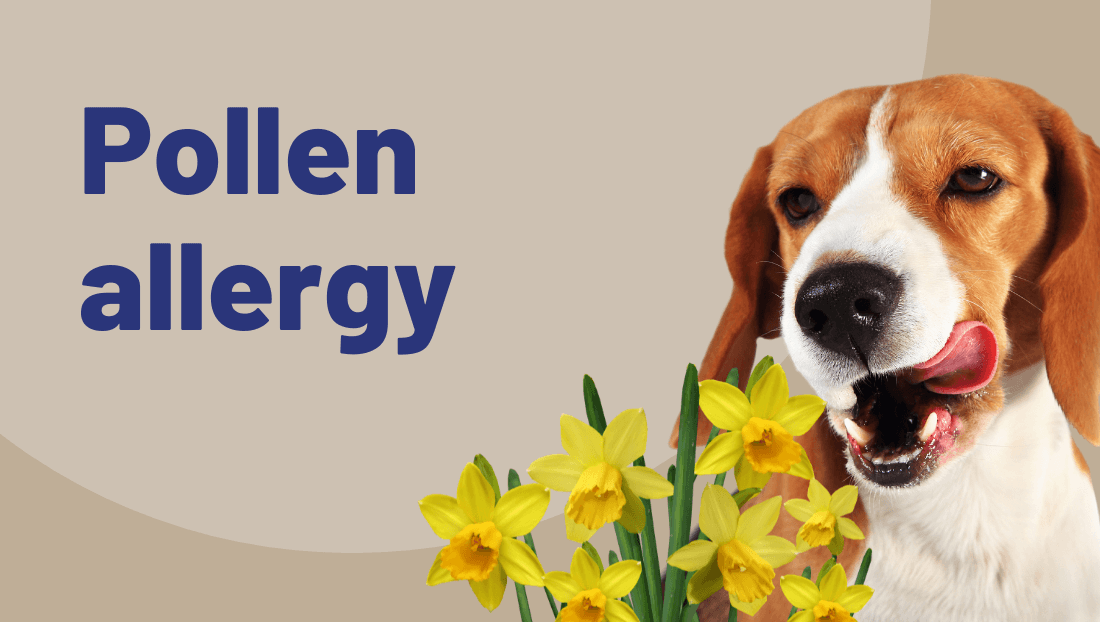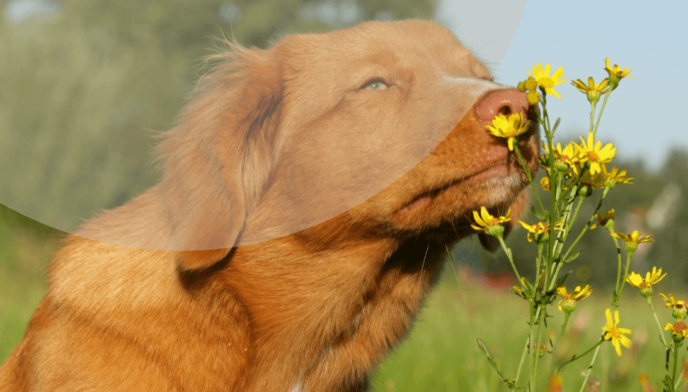
Pollen allergy in dogs and cats: understanding the challenge
Pollen allergy is a common problem affecting humans, but did you know it can also impact our pets, such as dogs and cats? In fact, environmental allergies, including pollen allergy, are on the rise among pets, posing additional challenges to their health and well-being.
At Veterinari del Clínic in Barcelona, we will address pollen allergy in dogs and cats to explore how pollen can trigger allergic reactions in our pets, as well as strategies you can use to manage this challenge and provide them with the care they require.
What is pollen allergy in dogs and cats?
Pollen allergy in dogs and cats is an increasingly recognized condition in the veterinary community. Like humans, these animals can experience an exaggerated immune response when they come into contact with pollen particles in the air. When dogs and cats inhale or come into contact with pollen through their skin or mucous membranes, their bodies trigger an immune response that results in the release of inflammatory chemicals, such as histamines, leading to the appearance of unpleasant and uncomfortable symptoms.
Symptoms of pollen allergy in dogs and cats:
– Frequent itching and scratching: Dogs and cats allergic to pollen often show signs of intense itching of the skin. This compulsive scratching behavior can interfere with their daily routine and cause them considerable discomfort.
– Skin redness and irritation: Exposure to pollen can cause redness, swelling and rashes on the skin of pets. These affected areas can become sensitive to the touch and may even develop secondary infections due to excessive scratching, further aggravating their condition.
– Hair loss: Pollen allergy can also result in hair loss in specific areas of the pet’s body, especially where the skin is constantly irritated from scratching. This hair loss can be of concern to pet owners and can affect the pet’s overall appearance.
– Eye and nasal discharge: Like humans, allergic dogs and cats may experience eye and nasal discharge as a result of pollen exposure. This may manifest as watery eyes, frequent sneezing and nasal congestion, contributing to their discomfort.

How can I protect dogs and cats from pollen allergy?
Completely preventing pollen allergy in dogs and cats can be difficult, as it is largely a genetic predisposition. However, there are steps you can take to help reduce the risk of your pet developing this allergy or to minimize its effects:
– Maintain a clean environment: Eliminate dust and household allergens, such as pollen, by vacuuming regularly, washing your pet’s bedding and cleaning the furniture where they sleep. It is important to keep their areas where they eat, sleep and drink free from dirt and dust.
– Healthy food: Provide a balanced, high quality diet for your pet. Proper nutrition can help strengthen the immune system and reduce susceptibility to allergies.
– Control pollen exposure: Keep your pet indoors during days with a high pollen count. This is not to say prevent your dog from going outside during high pollination times, as this could also affect their health, but it is recommended to avoid areas with a large density of vegetation during this period.
– Regular baths: Bathe your dog or cat with special allergy shampoos to remove pollen and other allergens from their skin and coat. This can help reduce the allergen load and prevent skin irritation.
– Regular veterinary visits: Schedule regular checkups with your vet to monitor your pet’s health and discuss any allergy concerns. Your vet may recommend additional preventative measures based on your pet’s specific needs.
– Consult with the breeder: If your pet is from a breeder, research the health history of the pet’s parents and ancestors to detect possible genetic predispositions to allergies.
– Smoke-free environment: Avoid exposing your pet to cigarette smoke or other environmental irritants that may increase the risk of developing allergies.




No Comments
Sorry, the comment form is closed at this time.